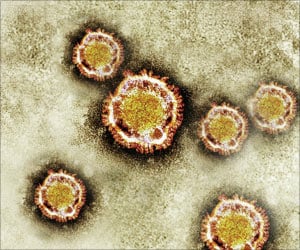A new brace that maintains correction for clubfoot, has shown better compliance and fewer complications than the traditional brace used to treat the condition.
A new brace that maintains correction for clubfoot, a birth defect in which the foot is turned in toward the body, has shown better compliance and fewer complications than the traditional brace used to treat the condition.
Matthew B. Dobbs, M.D., associate professor of orthopedic surgery at the School of Medicine, designed the new dynamic brace, called the Dobbs brace, to allow active movement, preserve muscle strength in the foot and ankle and be less restrictive to the child than the traditional brace.Dobbs tested the brace on 28 patients who had already received non-surgical treatment for their clubfeet at St. Louis Children's Hospital and St. Louis Shriners Hospital. Over a two- to three-year follow-up period, Dobbs and his colleagues found that the Dobbs brace is at least as effective as the traditional brace and resulted in better compliance by parents.
Dobbs first treated children with clubfoot deformity using the Ponseti method. The treatment, developed in the 1950s by Ignacio Ponseti, M.D., professor emeritus of orthopedics and rehabilitation at the University of Iowa, involves weekly casting and manipulation of the clubfoot soon after birth.
When done correctly, the Ponseti method greatly reduces the need for extensive surgery, which can contribute to painful and arthritic feet in adulthood. The children with clubfoot whom Ponseti treated with this method were likely to have normally functioning, pain-free, flexible feet in adulthood.
Traditionally, children who have been treated for clubfoot using the Ponseti method must wear a nighttime brace that turns their feet away from the body for three to four years following the initial casting treatment.
The brace has open-toed, high-top shoes attached to a shoulder-width fixed metal bar. Because of skin blistering and the brace's restriction of leg motion, many parents used the brace less than had been prescribed, which can allow recurrent clubfoot deformities that may require extensive surgery. In fact, past studies had shown that about 30 percent to 40 percent of families do not use the traditional brace as prescribed.
Advertisement
The bar connecting the feet has a release mechanism that allows parents to easily detach and reattach the bar to place the child in a car seat or high chair or change a diaper without removing the entire brace. Other differences from the traditional brace is that the Dobbs brace also allows children to move their legs independently while wearing the brace.
Advertisement
All 28 patients in the study had reached full correction for their clubfoot before being fitted for the brace. Eighteen patients who had not been wearing the traditional brace as prescribed were fitted for the Dobbs brace. The remaining patients were fitted only for the Dobbs brace. All but two patients wore the brace as prescribed.
Of the two patients who were noncompliant in wearing the brace, one patient had skin blistering due to improper use of the brace, which was eventually corrected, while the other patient was not kept in the brace because of the caregiver's work schedule.
"The newly designed, more flexible foot abduction orthosis is equally effective, or more so, than the traditional brace, considering rates of clubfoot relapse were less with the new orthosis than those reported in several series using the traditional brace," Dobbs said.
"Although our experience with the dynamic brace has been favorable, a randomized study comparing the dynamic orthosis to the traditional brace would provide a more accurate assessment of outcome." Dobbs said the bar connecting the feet can be used with other types of corrective footwear for clubfoot.
"Just having the flexible bar makes a huge difference in compliance and convenience," he said. The Dobbs brace was patented and is licensed through the University's Office of Technology Management.
Source-Eurekalert
JAY/C






